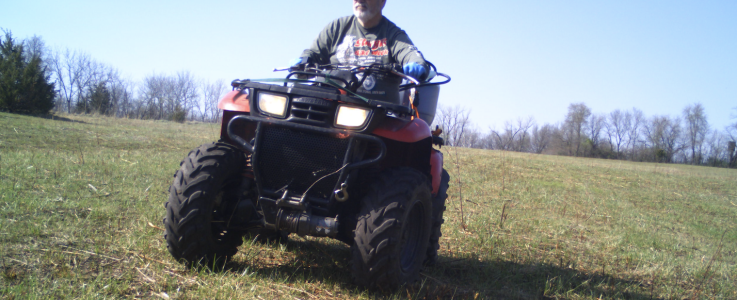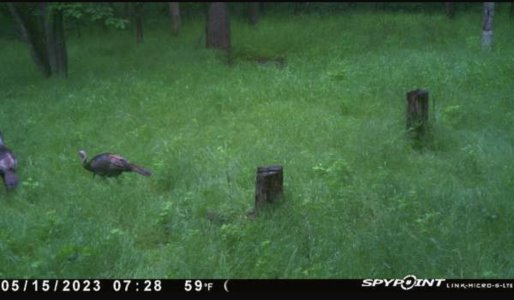356
5 year old buck +
Following acquiring home on 20 acres (then adding an additional 65 of adjacent farmland) in NW Missouri, I turned my attention to habitat improvement. After exploring various options, and being broke from the purchase of the property, I turned to the EQIP (Environmental Quality Incentive Program) as a cost-sharing opportunity. Today, I submitted my final request for payment on this three year project.
History: I applied for the EQIP pollinator program in 2017 and was turned down. My wife and I reapplied in 2018 with an expanded request that included conservation cover, wildlife habitat planting and riparian forest buffers in addition the pollinator project. Our conservation department specialist was very helpful in developing the proposal. The project was approved in November 2018. A total just over 9 of our 85 acres were committed to this project.
The first step was the clearing of 9 acres of invasive Red Cedar.
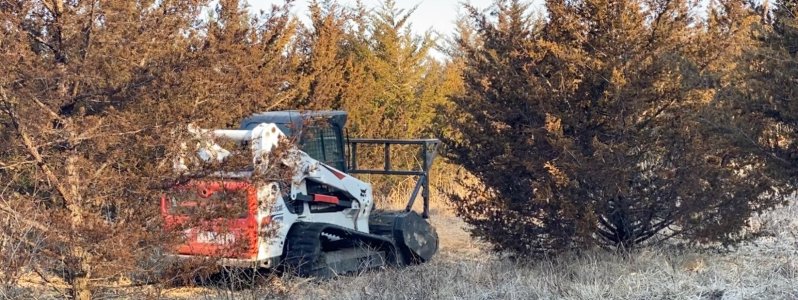
Above: During Removal, Spring 2020
Below: After Removal, Spring 2021
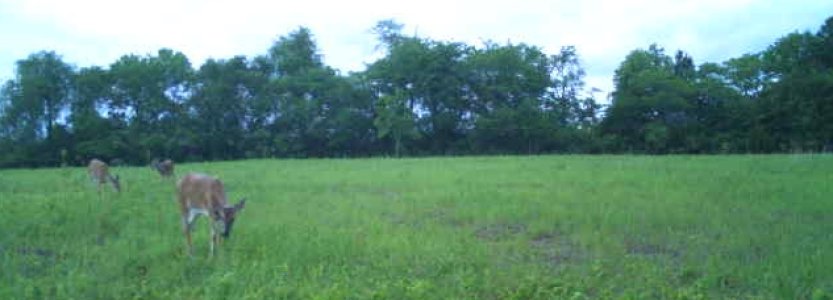
During Spring 2021 I mowed and lightly tilled the 5 acre conservation plot, the 2 acre pollinator plot and the 1 acre wildlife plot. This was followed by a late winter prescribed burn (March 2022), a Roundup application during early green-up and a second Roundup application prior to seeding. The seed mixes were prescribed by the contract, and were drilled into the plots using a no-till drill rented from the county. The lessons learned from that experience are part of an earlier post.
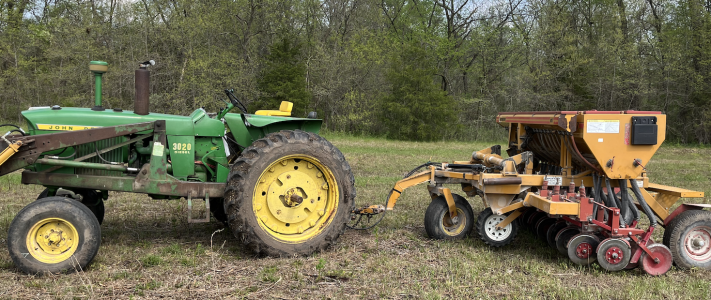
We planted over 200 trees (White Oak, Black Oak, Red Oak, Burr Oak, Persimmon, Wild Plum and Chokeberry) in a 0.6 acre riparian buffer zone. While the project is coming to an end, the agreement requires maintaining the contracted area for five years. This may involve additional seedings (frost-seeding or broadcast) to maintain the native balance, and replanting trees to ensure a 66% or higher survival rate.
We are already seeing many more pollinators on our property, and the deer seem to enjoy the natural browse and cover.
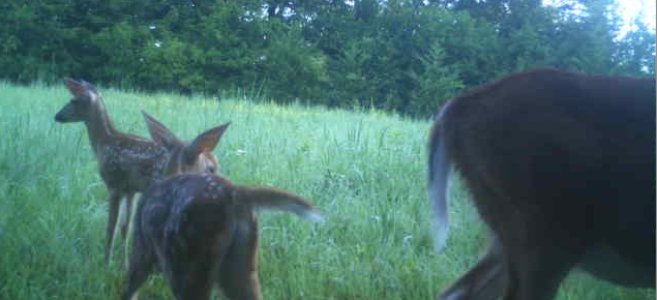
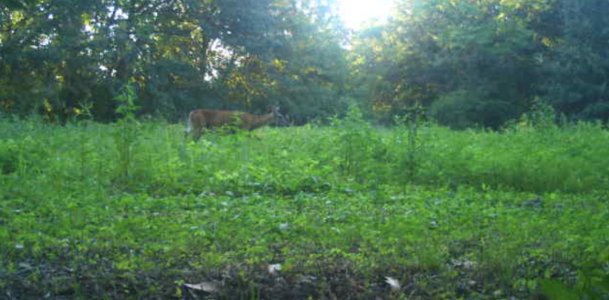
So, would I do this again? My out of pocket costs (not including equipment purchases, but including seeds, rentals and fuel) was $6500. The program reimbursed $6600. I significantly underestimated the time it would take to complete the project tasks, and have over 200 hours invested for a whopping $0.50/hour. For someone who wants flexibility to implement the latest food plot trend or experiment with a new method, EQIP is not an option. On the upside, I believe the program forced me to engage in habitat improvement. Sometimes having a schedule and incentive is a great motivation. Maintenance will be primarily periodic prescribed fire, replanting lost trees and overseeing if needed.
I hope this summary provides a helpful perspective on the EQIP program. I truly enjoyed getting to know our local forestry manager during the process. I also appreciate knowing that from this point onward the use of chemicals and expensive plantings will not be required. I'll post updates as appropriate.
History: I applied for the EQIP pollinator program in 2017 and was turned down. My wife and I reapplied in 2018 with an expanded request that included conservation cover, wildlife habitat planting and riparian forest buffers in addition the pollinator project. Our conservation department specialist was very helpful in developing the proposal. The project was approved in November 2018. A total just over 9 of our 85 acres were committed to this project.
The first step was the clearing of 9 acres of invasive Red Cedar.

Above: During Removal, Spring 2020
Below: After Removal, Spring 2021

During Spring 2021 I mowed and lightly tilled the 5 acre conservation plot, the 2 acre pollinator plot and the 1 acre wildlife plot. This was followed by a late winter prescribed burn (March 2022), a Roundup application during early green-up and a second Roundup application prior to seeding. The seed mixes were prescribed by the contract, and were drilled into the plots using a no-till drill rented from the county. The lessons learned from that experience are part of an earlier post.

We planted over 200 trees (White Oak, Black Oak, Red Oak, Burr Oak, Persimmon, Wild Plum and Chokeberry) in a 0.6 acre riparian buffer zone. While the project is coming to an end, the agreement requires maintaining the contracted area for five years. This may involve additional seedings (frost-seeding or broadcast) to maintain the native balance, and replanting trees to ensure a 66% or higher survival rate.
We are already seeing many more pollinators on our property, and the deer seem to enjoy the natural browse and cover.


So, would I do this again? My out of pocket costs (not including equipment purchases, but including seeds, rentals and fuel) was $6500. The program reimbursed $6600. I significantly underestimated the time it would take to complete the project tasks, and have over 200 hours invested for a whopping $0.50/hour. For someone who wants flexibility to implement the latest food plot trend or experiment with a new method, EQIP is not an option. On the upside, I believe the program forced me to engage in habitat improvement. Sometimes having a schedule and incentive is a great motivation. Maintenance will be primarily periodic prescribed fire, replanting lost trees and overseeing if needed.
I hope this summary provides a helpful perspective on the EQIP program. I truly enjoyed getting to know our local forestry manager during the process. I also appreciate knowing that from this point onward the use of chemicals and expensive plantings will not be required. I'll post updates as appropriate.
Last edited:

